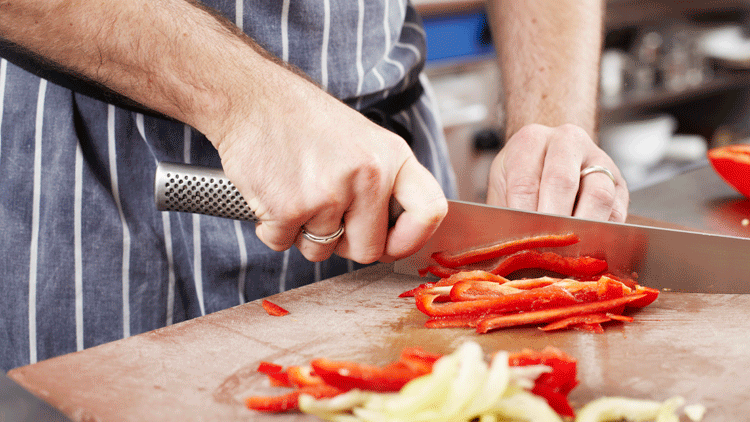When it comes to kitchen safety and hygiene, selecting the right cutting board for your food prep is essential. Especially when dealing with seafood, it’s imperative to understand the best practices and color coding that ensure safety. In this article, we’ll delve into what color cutting board for seafood is best, the importance of using color-coded cutting boards, and more.

The Importance of Color Coding in the Kitchen
Color coding cutting boards is a popular practice in professional kitchens and increasingly in home kitchens. The main goal is to prevent cross-contamination, especially between raw meats, seafood, vegetables, and cooked foods.
Why Use a Specific Color for Seafood?
Seafood, like raw fish and shellfish, can harbor bacteria and parasites that cause foodborne illnesses. Using a specific color-coded cutting board for seafood helps minimize the risk of cross-contamination. The accepted color for seafood cutting boards is typically blue.

Advantages of Using Blue Cutting Boards for Seafood
Visual Distinction
Using a blue cutting board allows for easy visual identification, ensuring that there is no confusion or misuse.
Preventing Cross-Contamination
By using a blue cutting board exclusively for seafood, you significantly reduce the chances of cross-contamination with other food items.

Blue Cutting Boards: Material and Maintenance
Material Choices
Blue cutting boards come in various materials, including plastic, wood, and composite materials. Each has its advantages and can be chosen based on your personal preference and usage.
Cleaning and Maintenance
Proper cleaning and maintenance of your blue cutting board are critical. Use hot, soapy water to wash after each use, and periodically sanitize with a mixture of bleach and water. For more detailed instructions, refer to this guide on cleaning and sanitizing cutting boards.
Alternatives to Blue Cutting Boards
While blue is the standard color for seafood cutting boards, some kitchens may use alternative color systems. For example, green for vegetables, red for raw meat, yellow for cooked meat, and white for bakery and dairy products. However, staying consistent with widely accepted practices ensures better safety and compliance.
Using Multi-Colored Cutting Board Sets
To maintain a high level of hygiene, consider investing in a multi-colored cutting board set. This helps keep all food categories separate and reduces the risk of cross-contamination.
If you’re also preparing dishes like chicken shish kabobs, using color-coded boards is especially helpful.Click here to get tips on preparing this tasty dish.
Guidelines for Buying the Right Cutting Board
Choosing the Right Material
Plastic cutting boards are affordable and dishwasher safe, while wooden boards are more durable and easy on your knives. Composite materials offer a balance of durability and knife-friendliness.
Size and Thickness
Consider the size of your kitchen and the types of dishes you typically prepare. A mid-sized blue cutting board is usually sufficient for most seafood prep tasks.
Maintaining Hygiene in the Kitchen
Proper kitchen hygiene goes beyond just using the right cutting board. Always wash your hands before and after handling seafood, use separate utensils, and follow the principle of ‘Clean as You Go’.
Understanding the color of the produce dedicated cutting board is also essential for complete kitchen hygiene. Visit What is the Color of the Produce Dedicated Cutting Board? for more insights.
Expert Tips for Seafood Prep
Proper Thawing
Always thaw seafood in the refrigerator or under cold running water. This minimizes the risk of bacterial growth.
Cutting Techniques
Using the correct cutting techniques can make a significant difference in the final dish. For insights, refer to this comprehensive guide on cutting board usage.
Conclusion
Selecting the right color cutting board for seafoodtypically blueplays a vital role in kitchen safety. By implementing color-coded cutting boards, you can significantly reduce the risk of foodborne illnesses and maintain a cleaner, more organized kitchen.
FAQs
Why is blue the preferred color for seafood cutting boards?
Blue is often chosen because it’s easily distinguishable from the other standard colors used for different types of food, helping to prevent cross-contamination.
Can I use a wooden cutting board for seafood?
Yes, but make sure it is properly sanitized after each use to avoid bacterial growth. Wood can be tougher to clean thoroughly compared to plastic or composite materials.
How often should I replace my cutting board?
It depends on the material and usage, but generally, if you see deep grooves or cracks, it’s time to replace your cutting board.
As an Amazon Associate, I earn from qualifying purchases.


